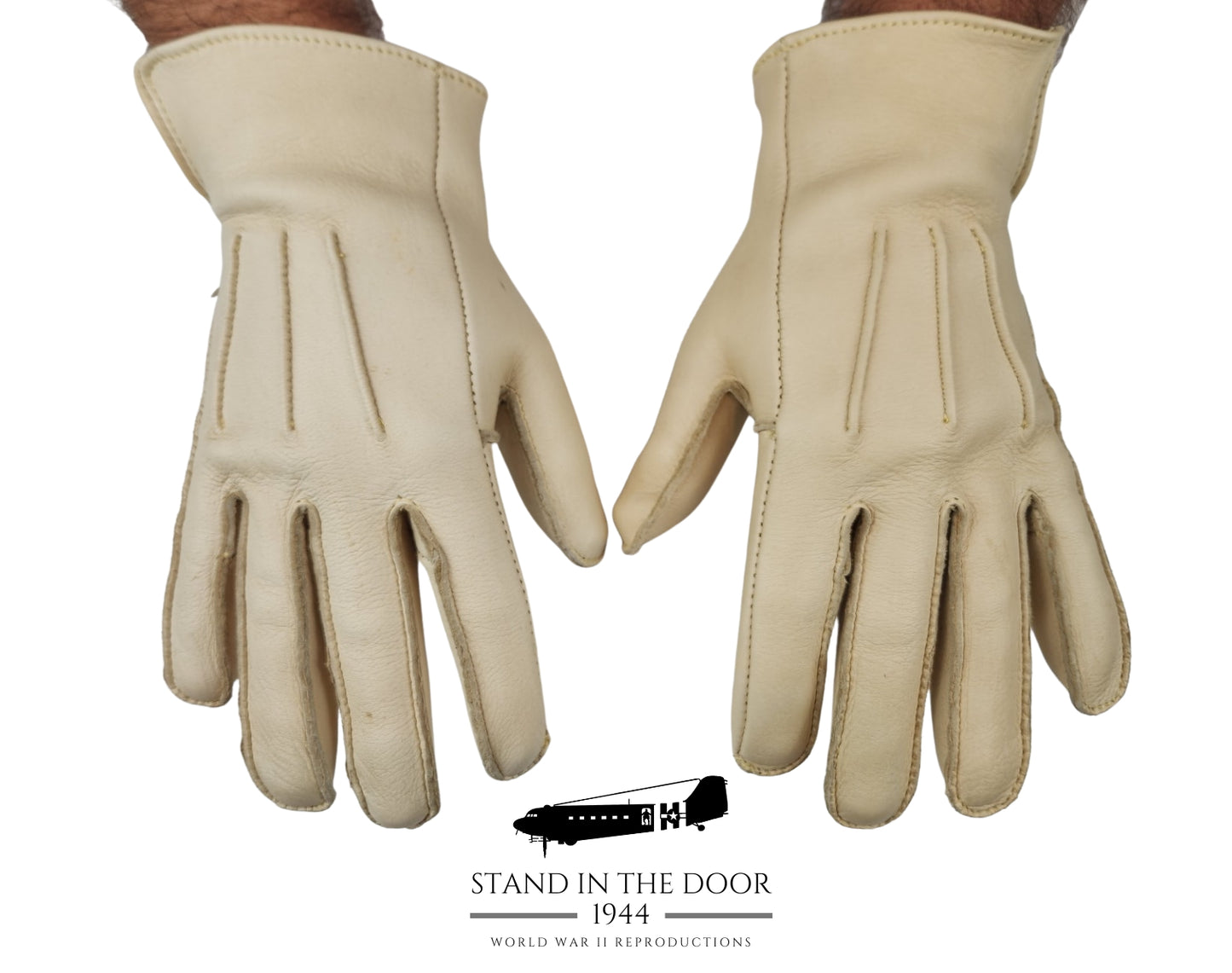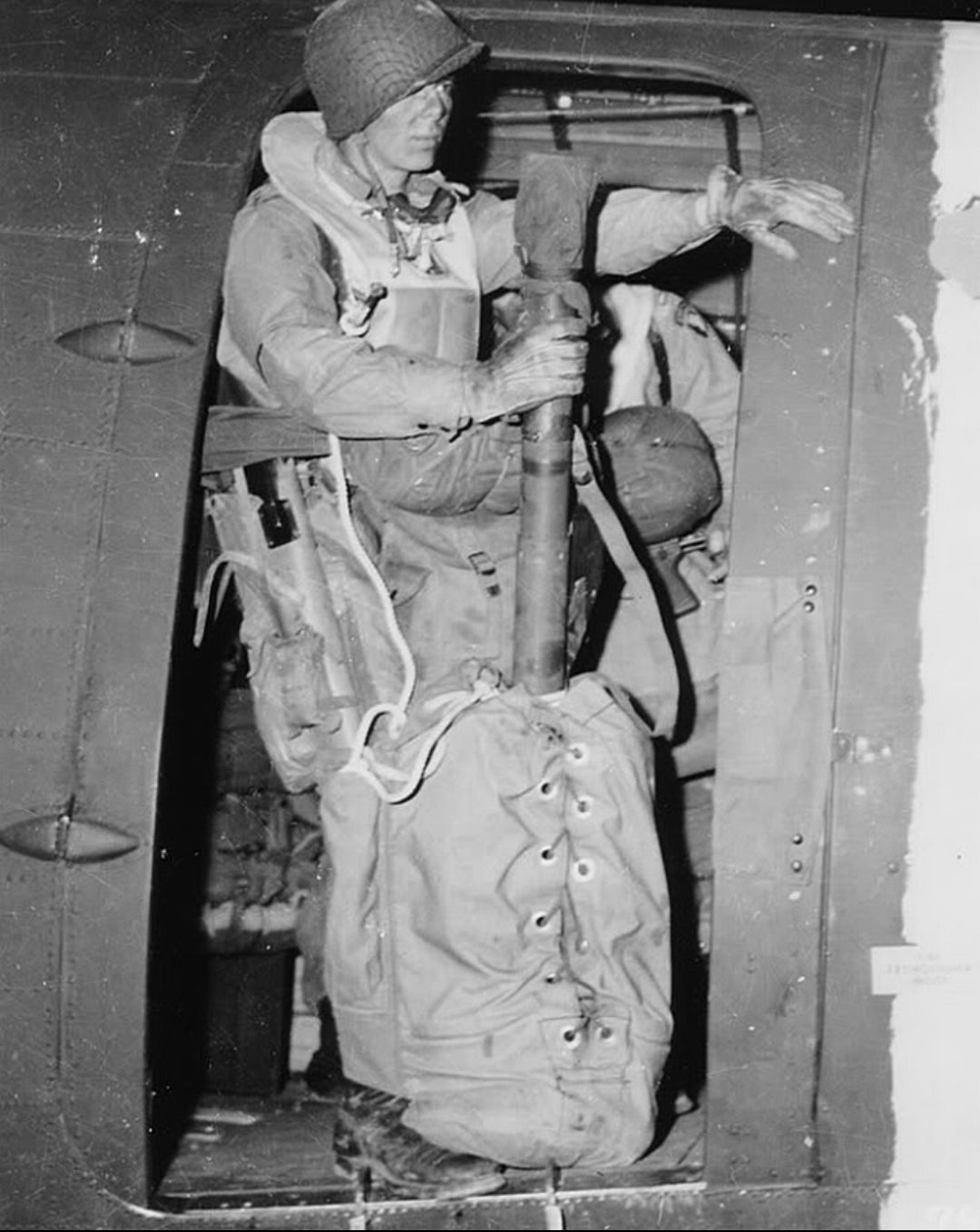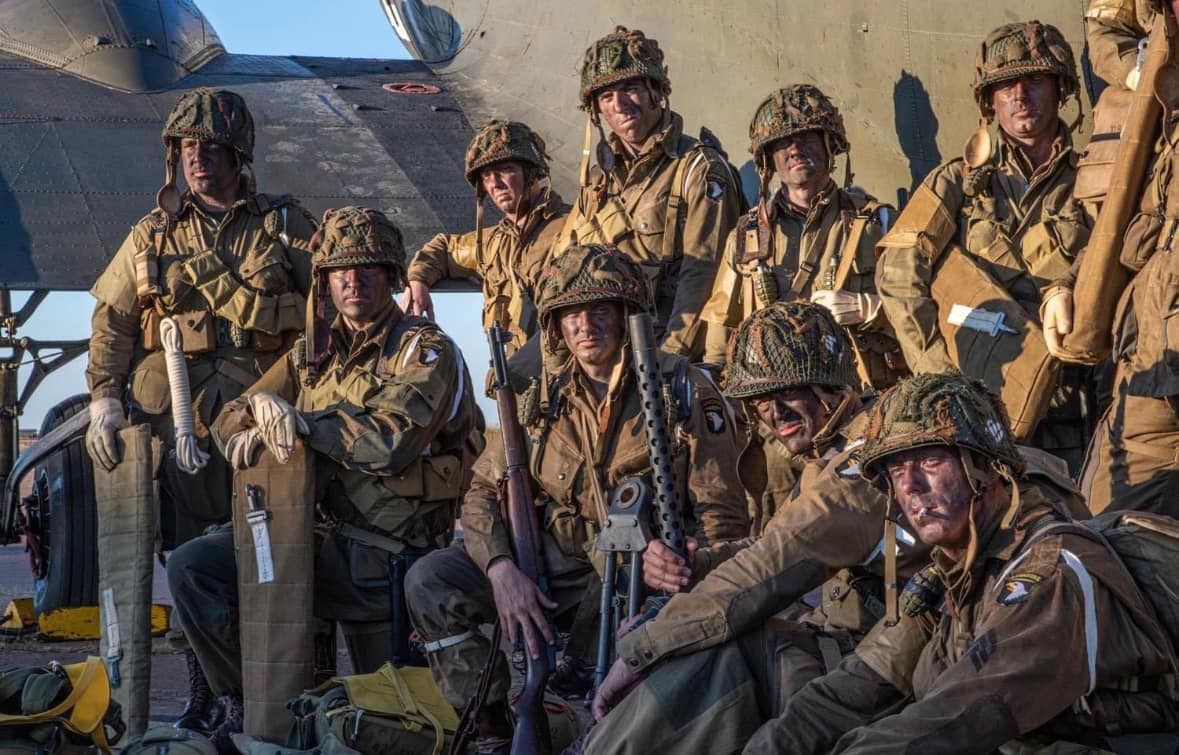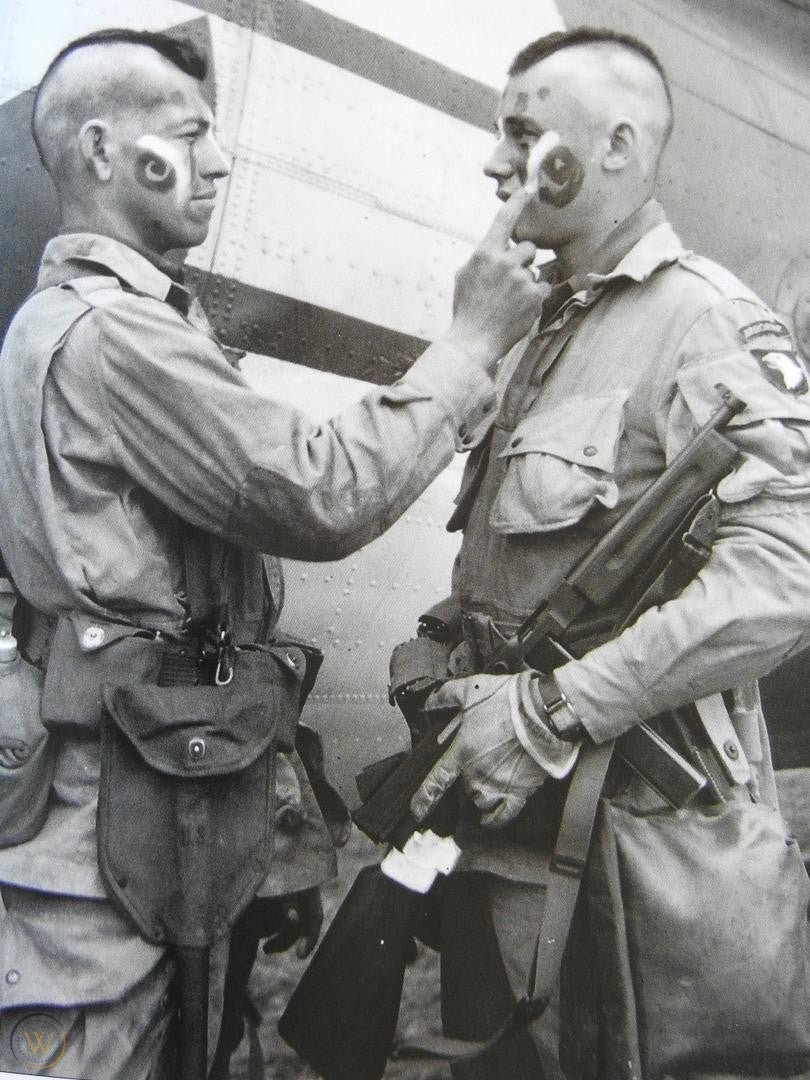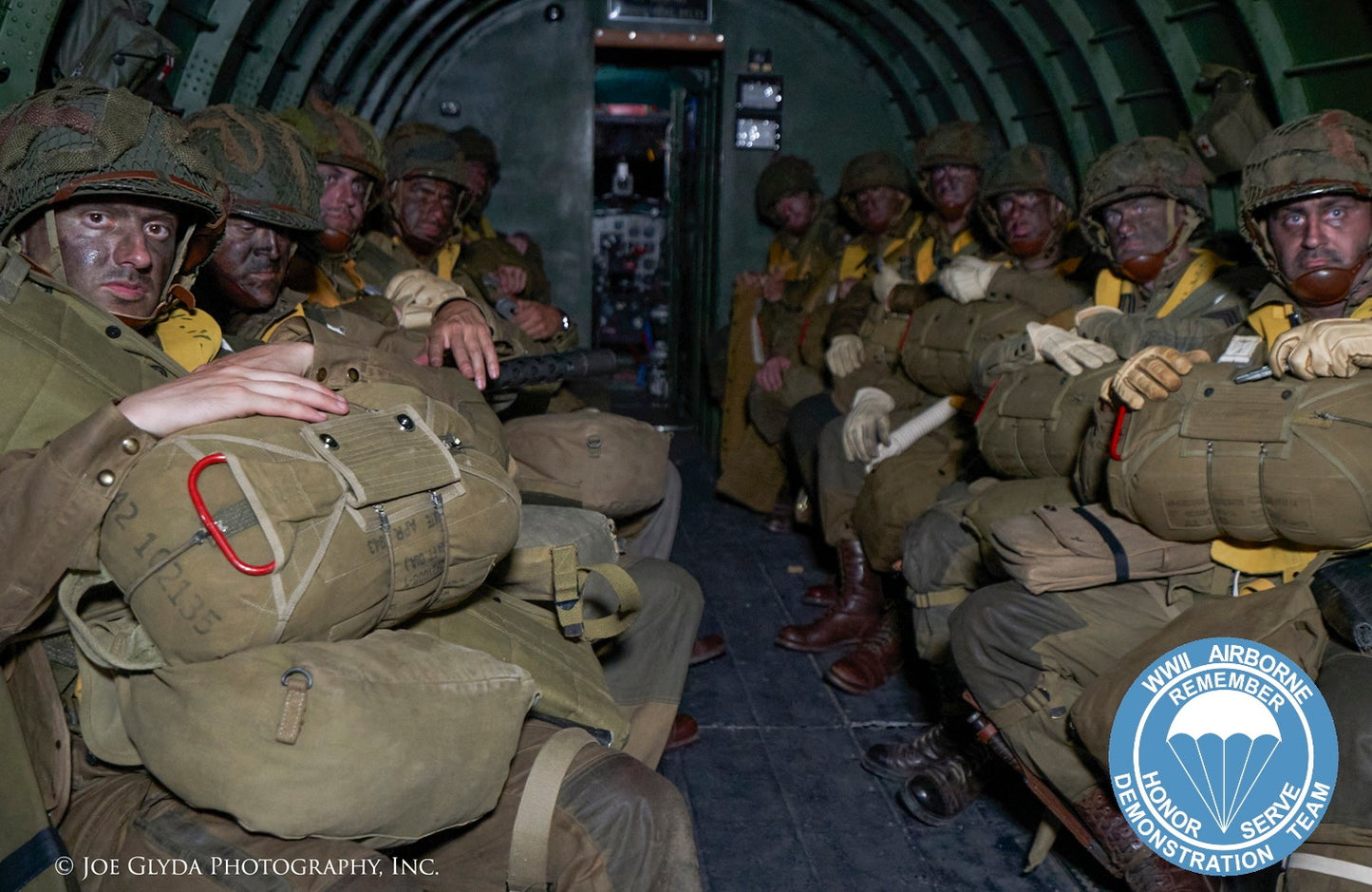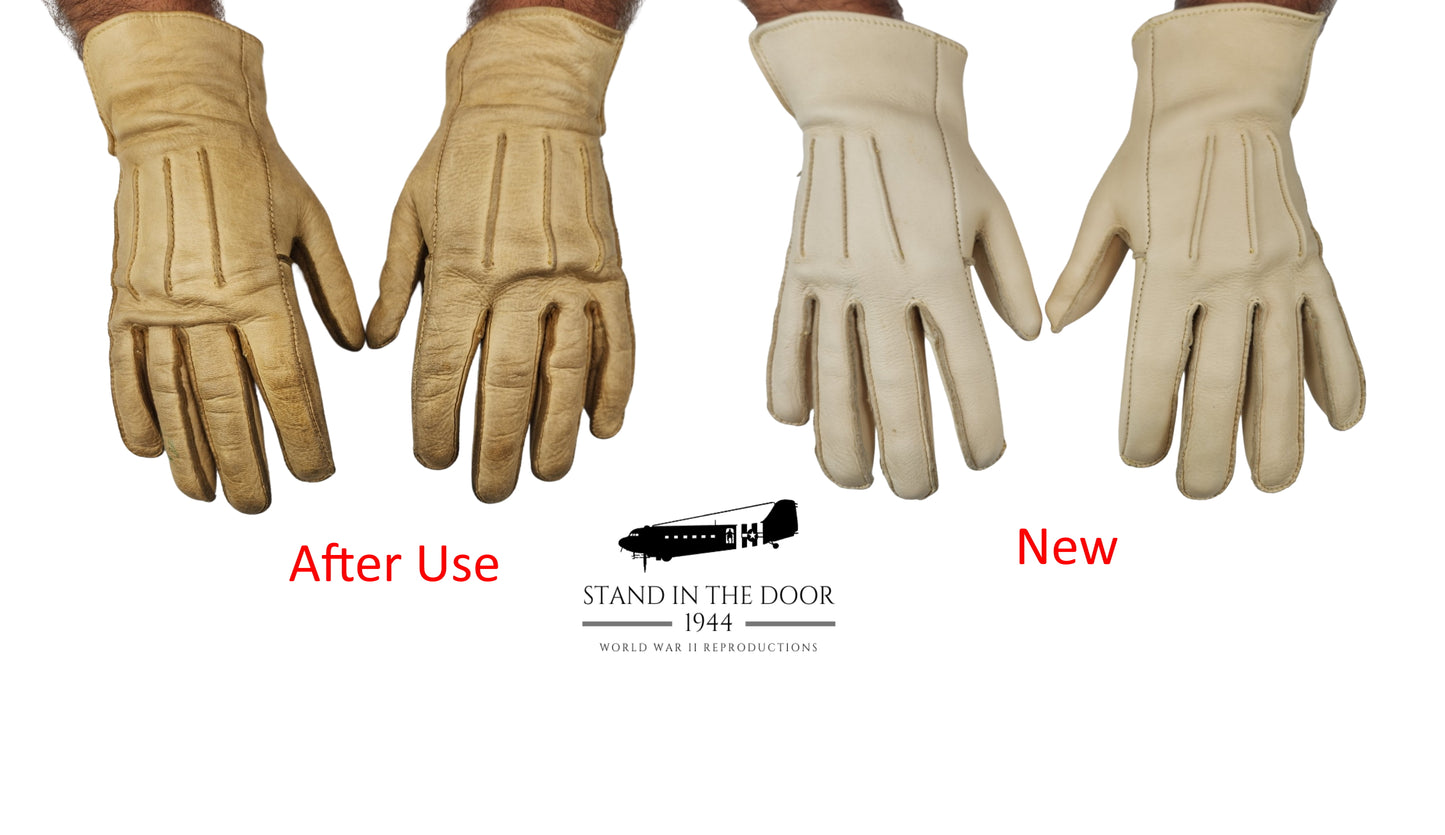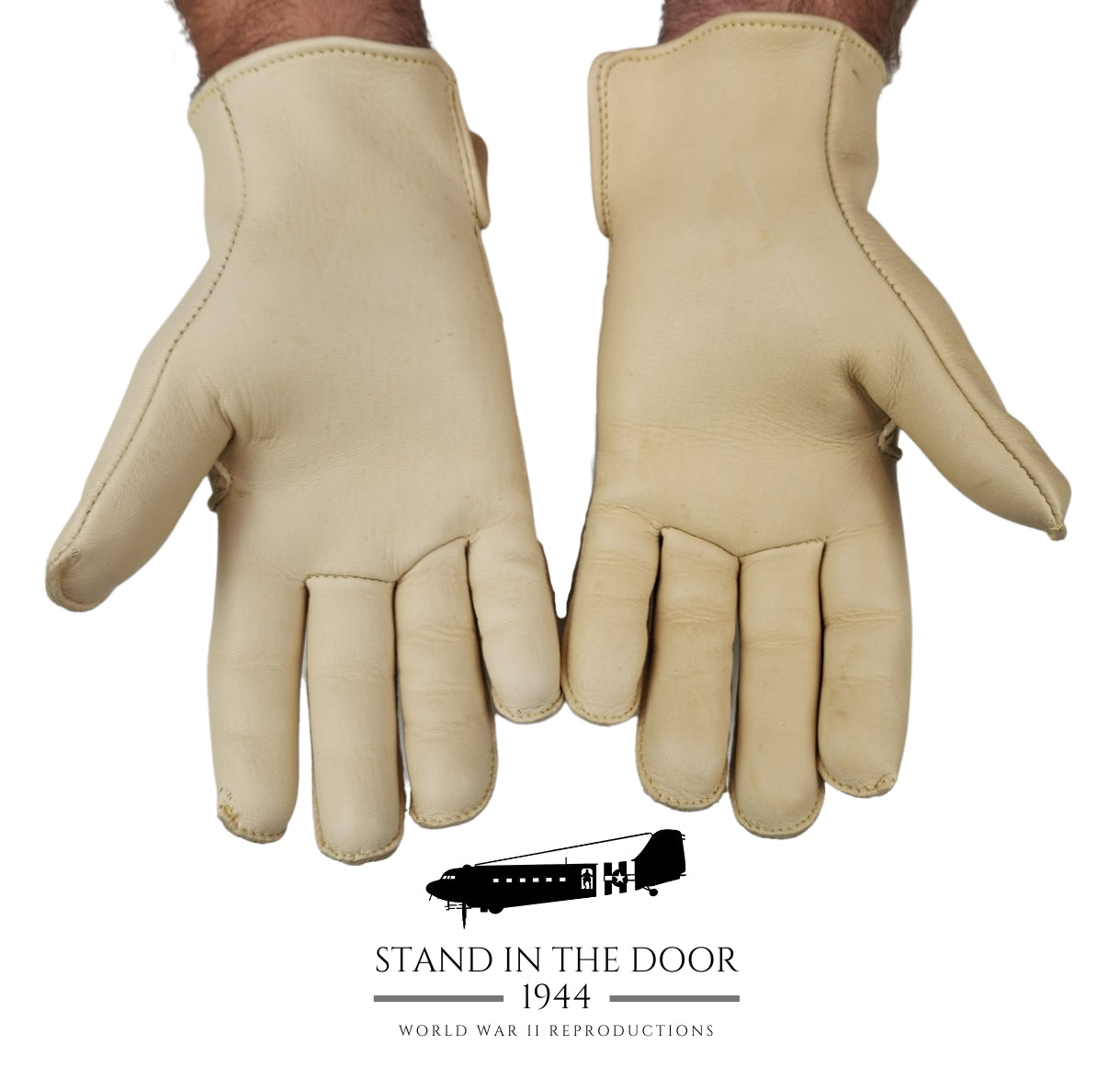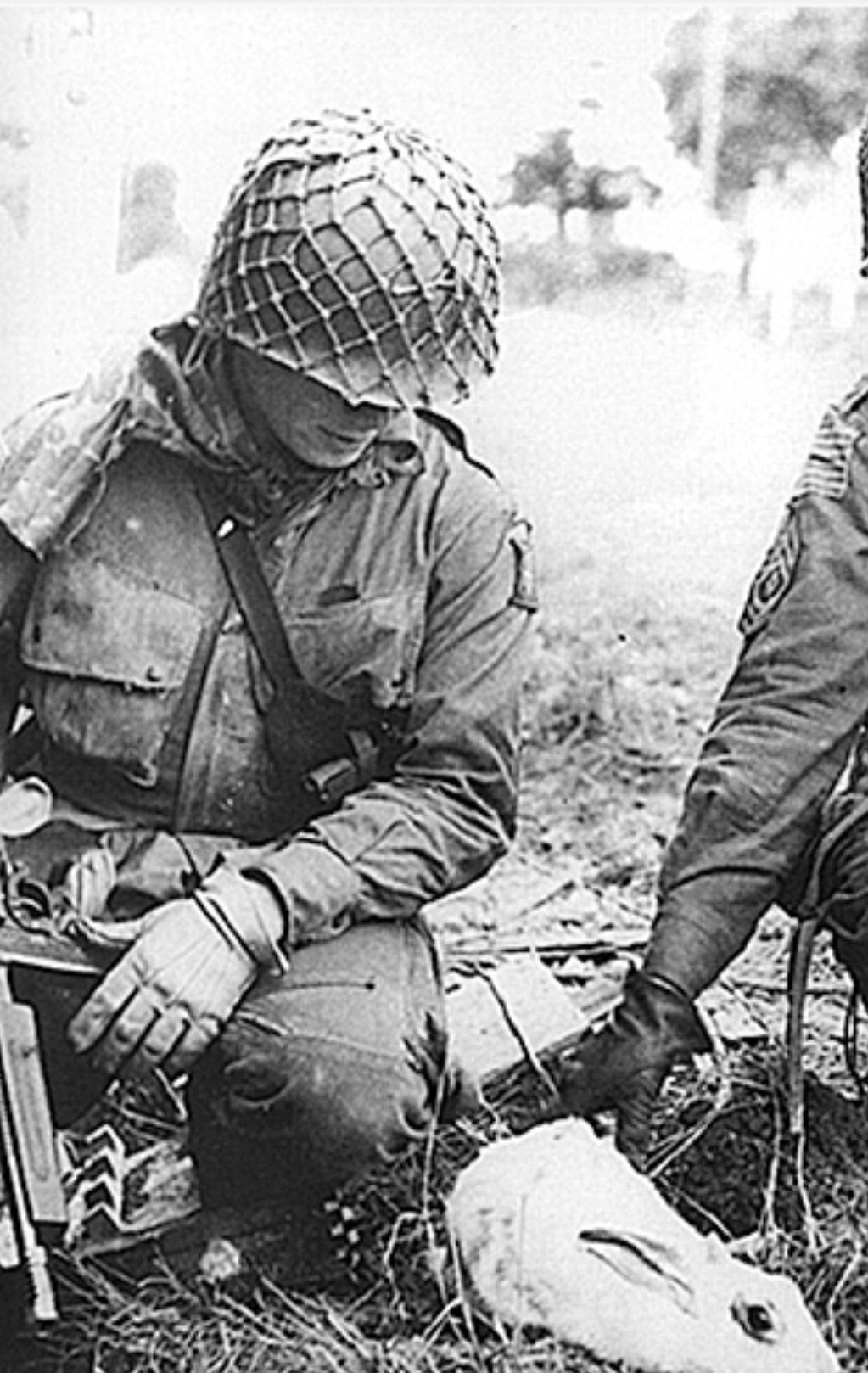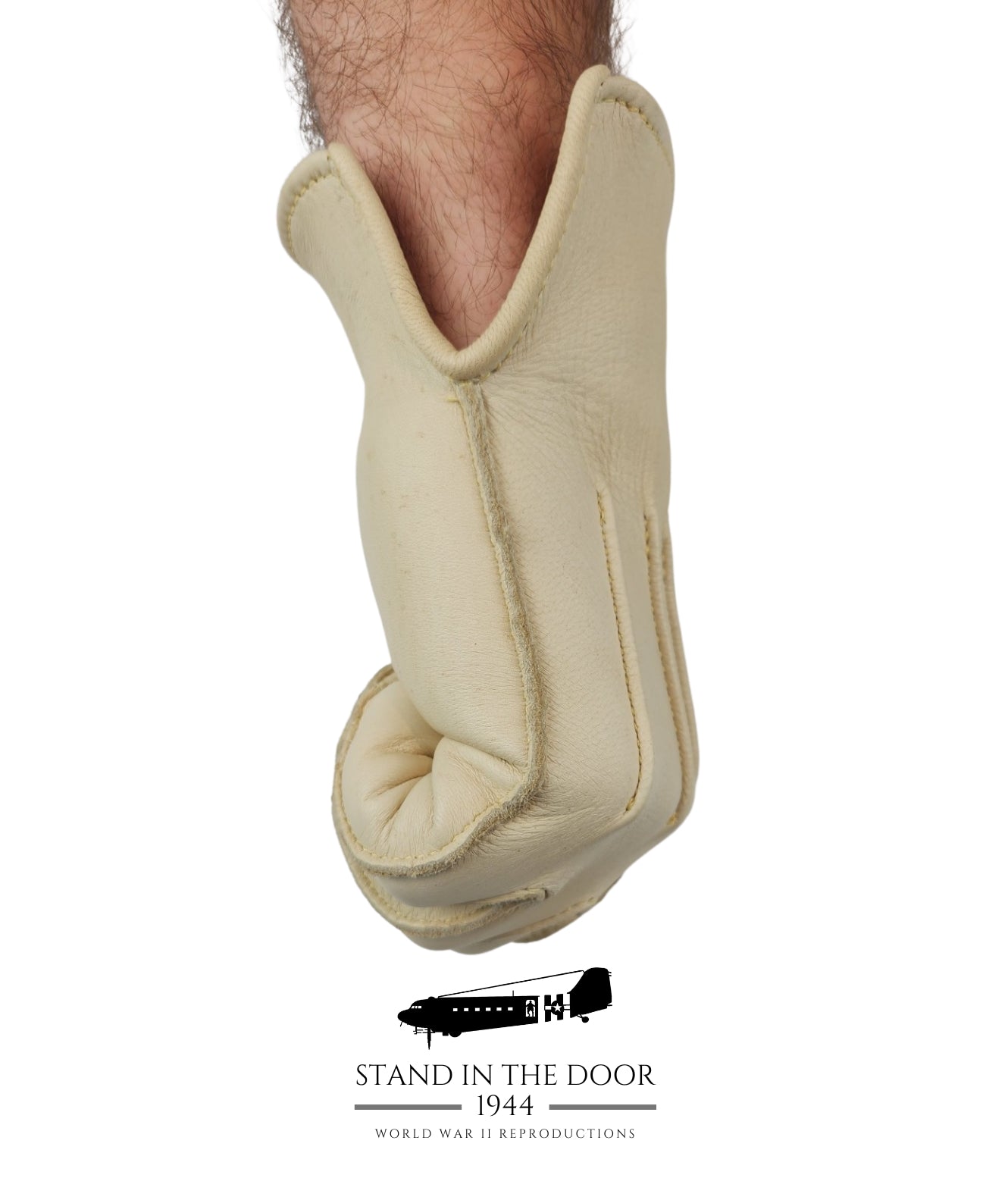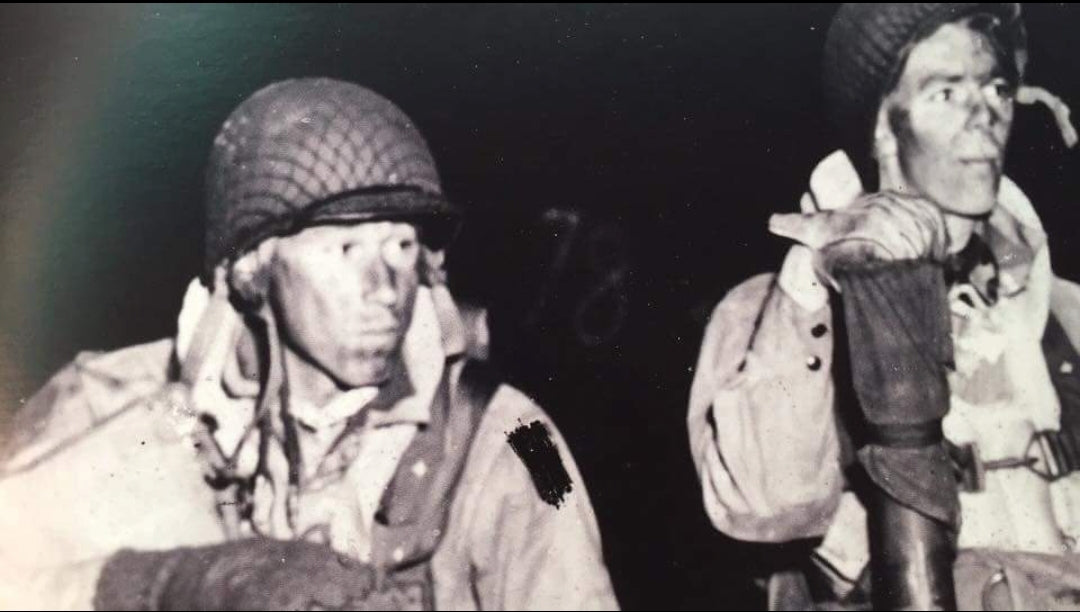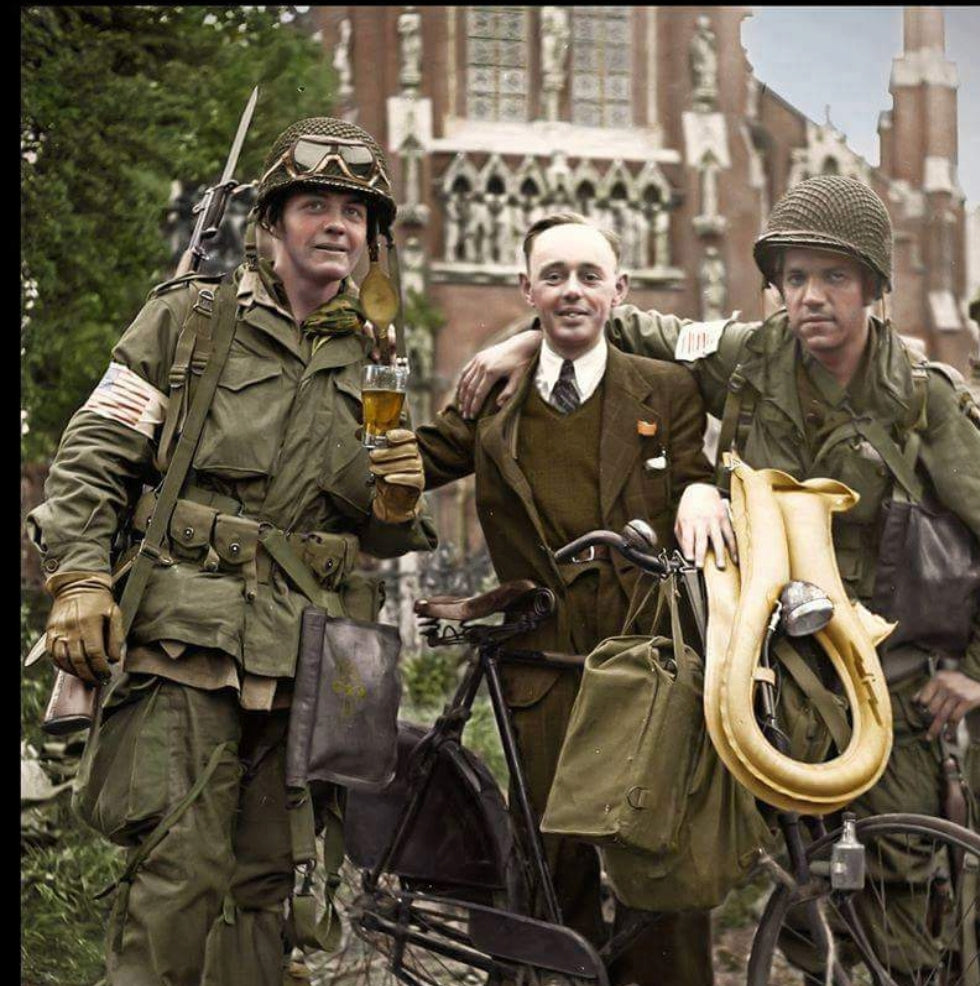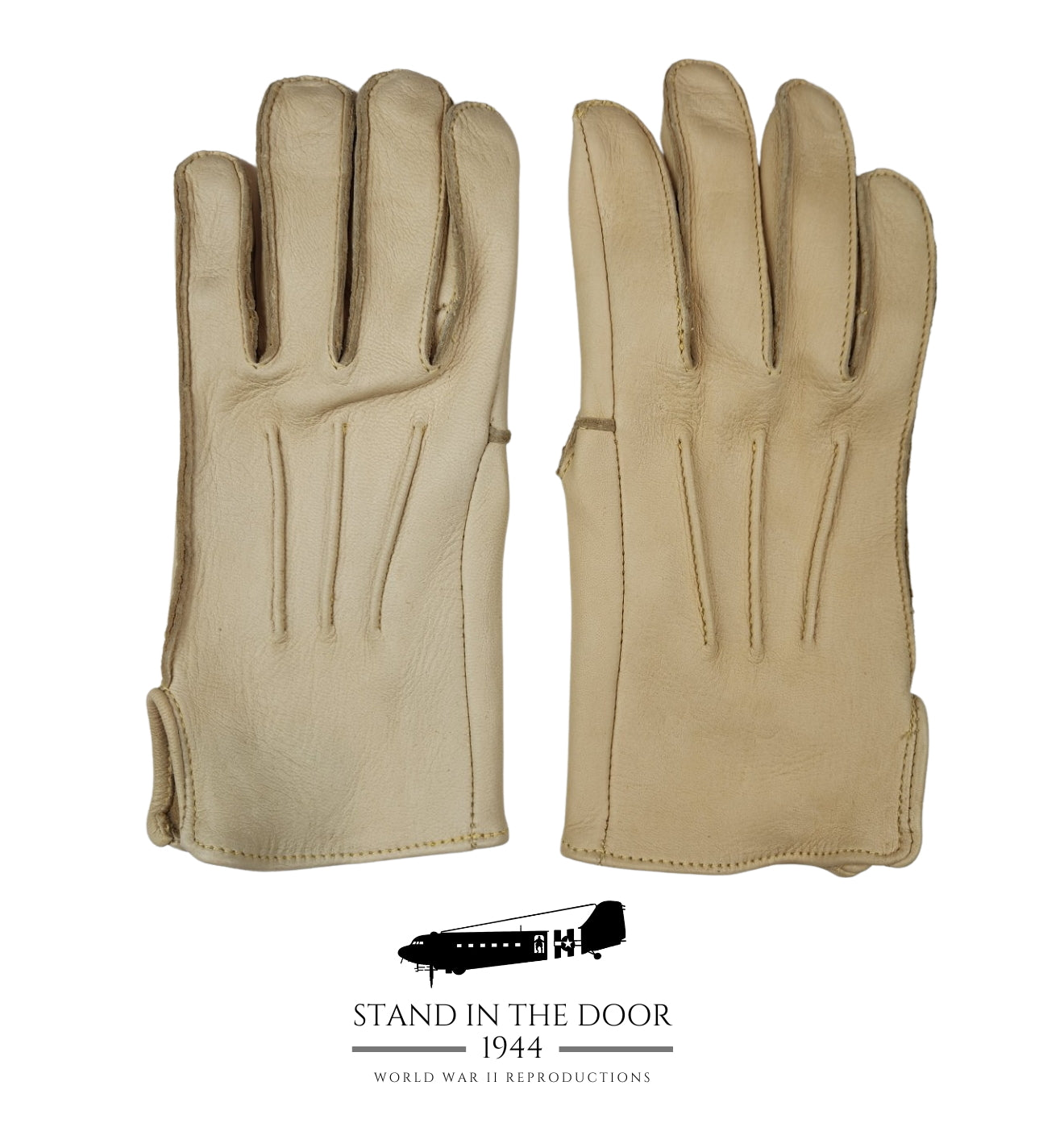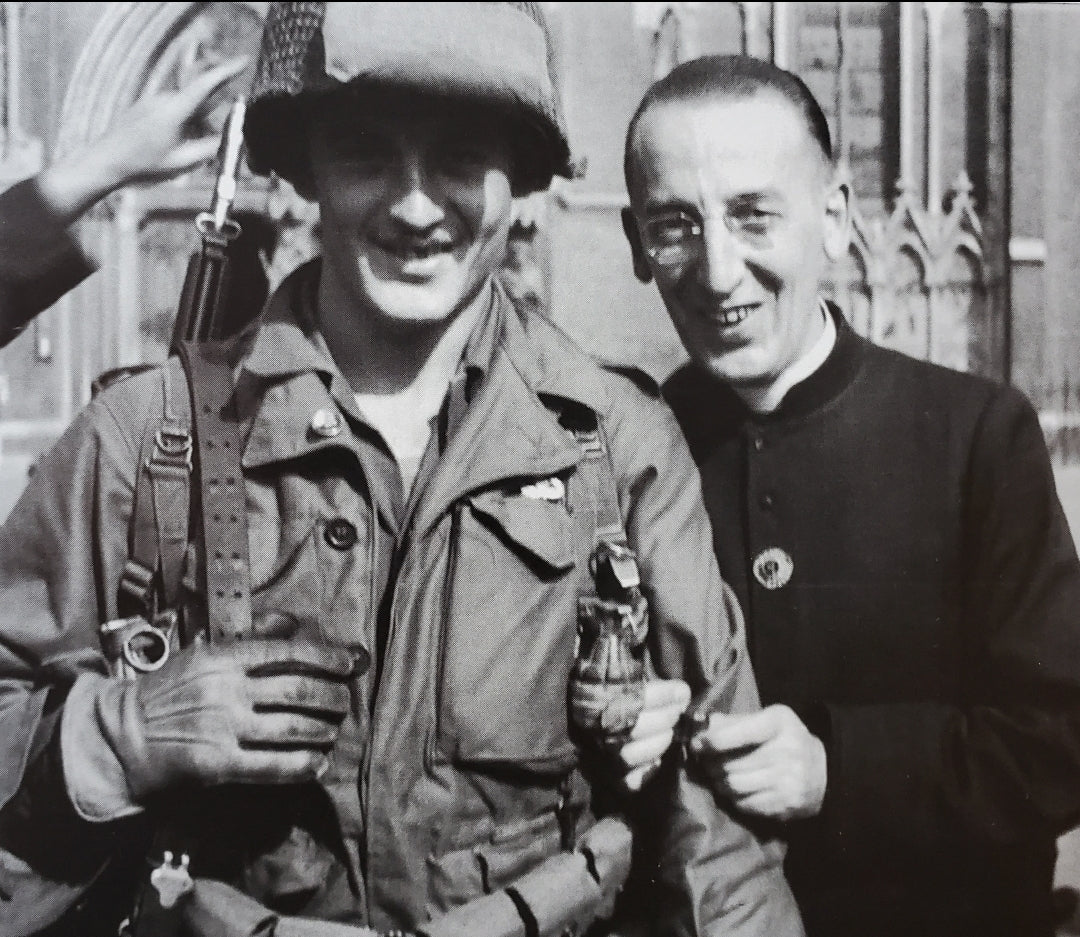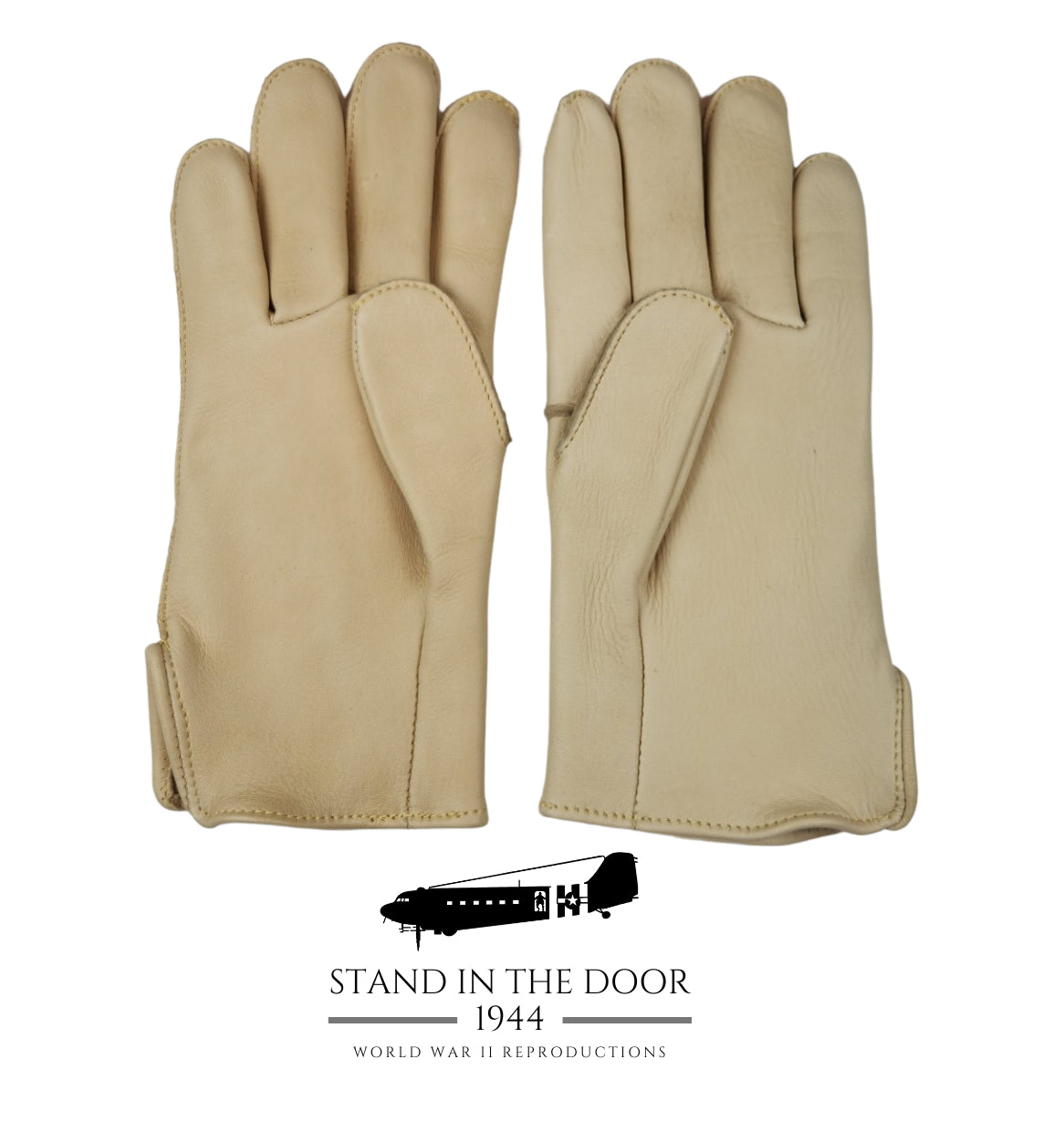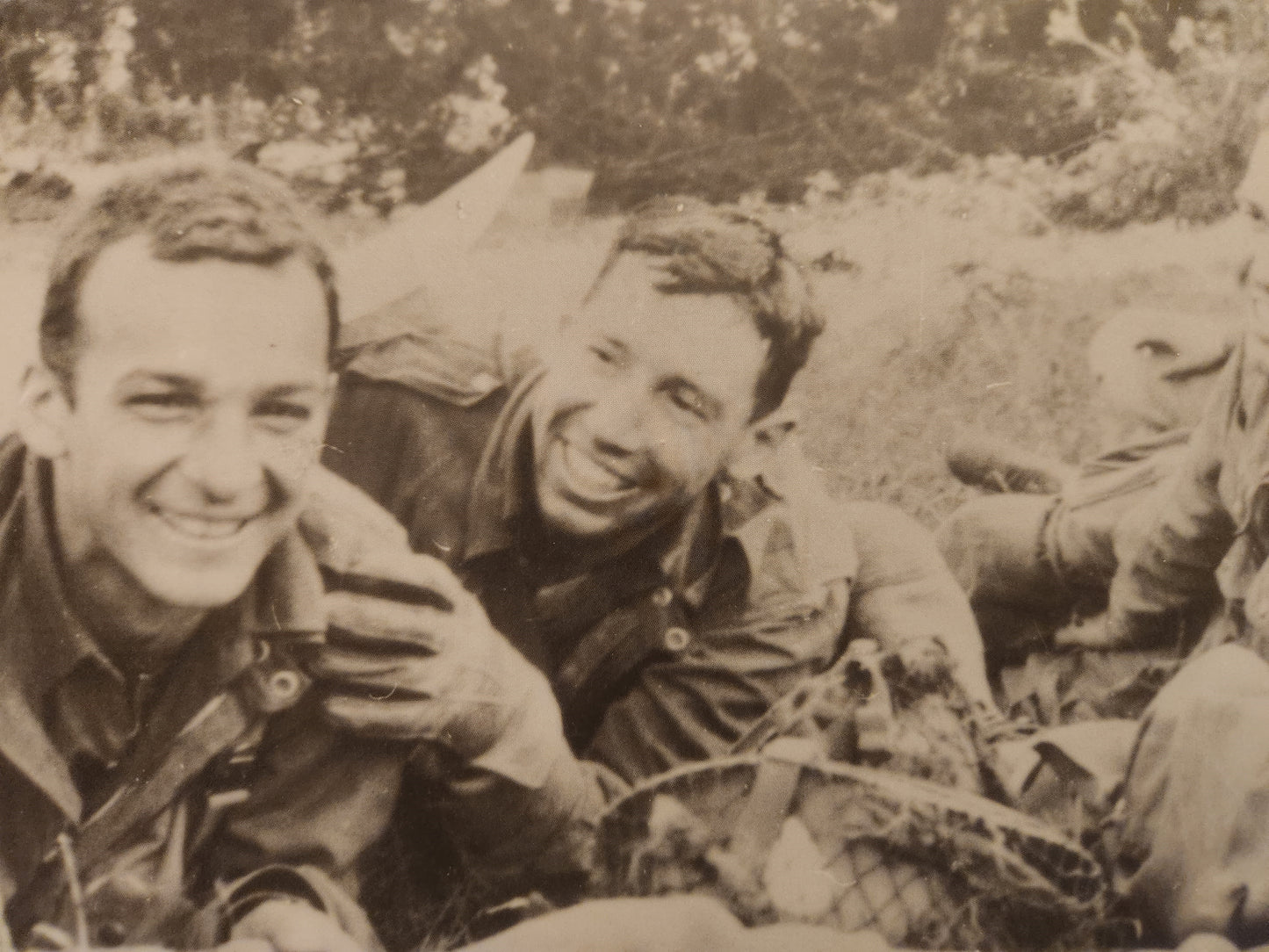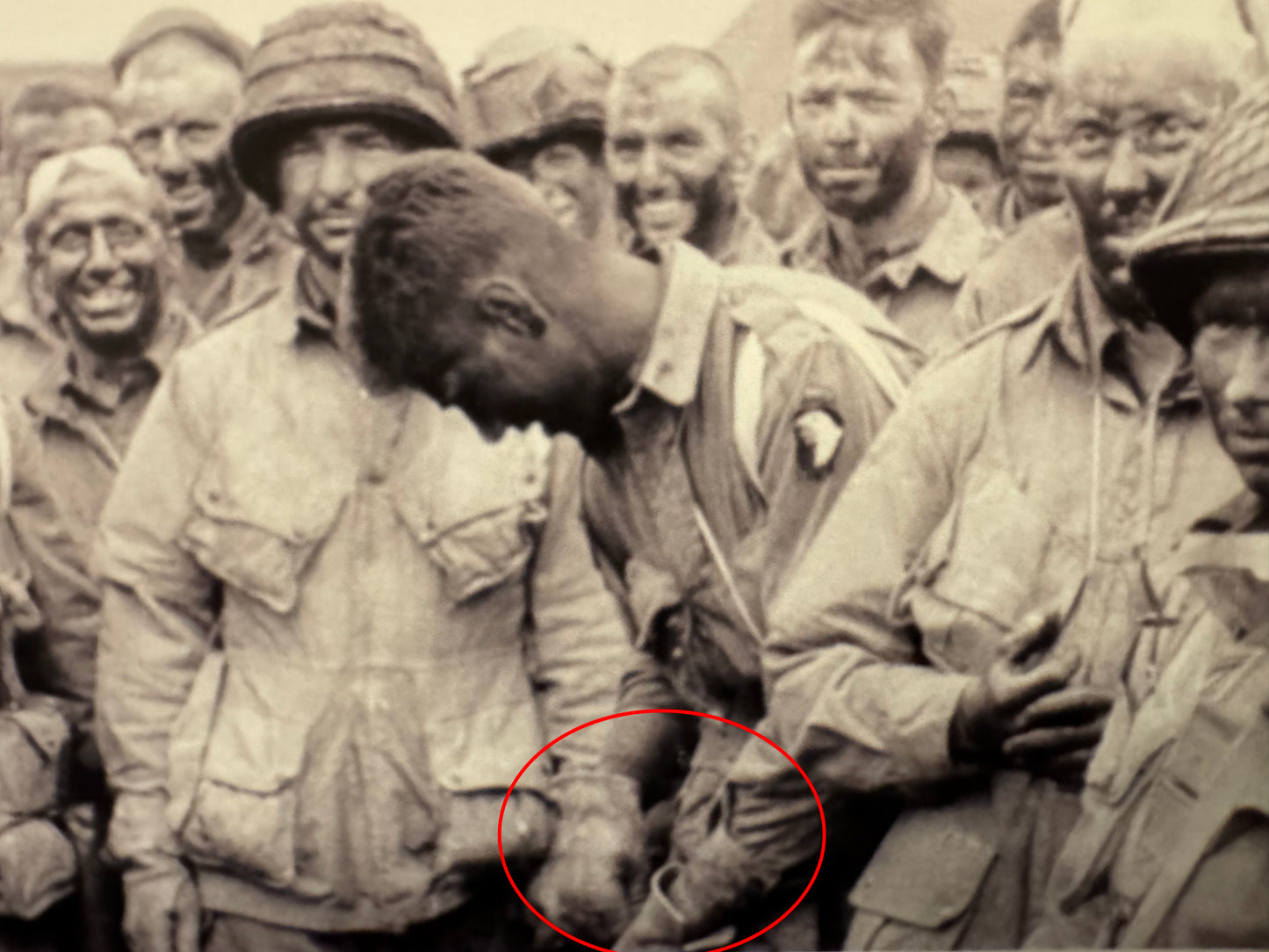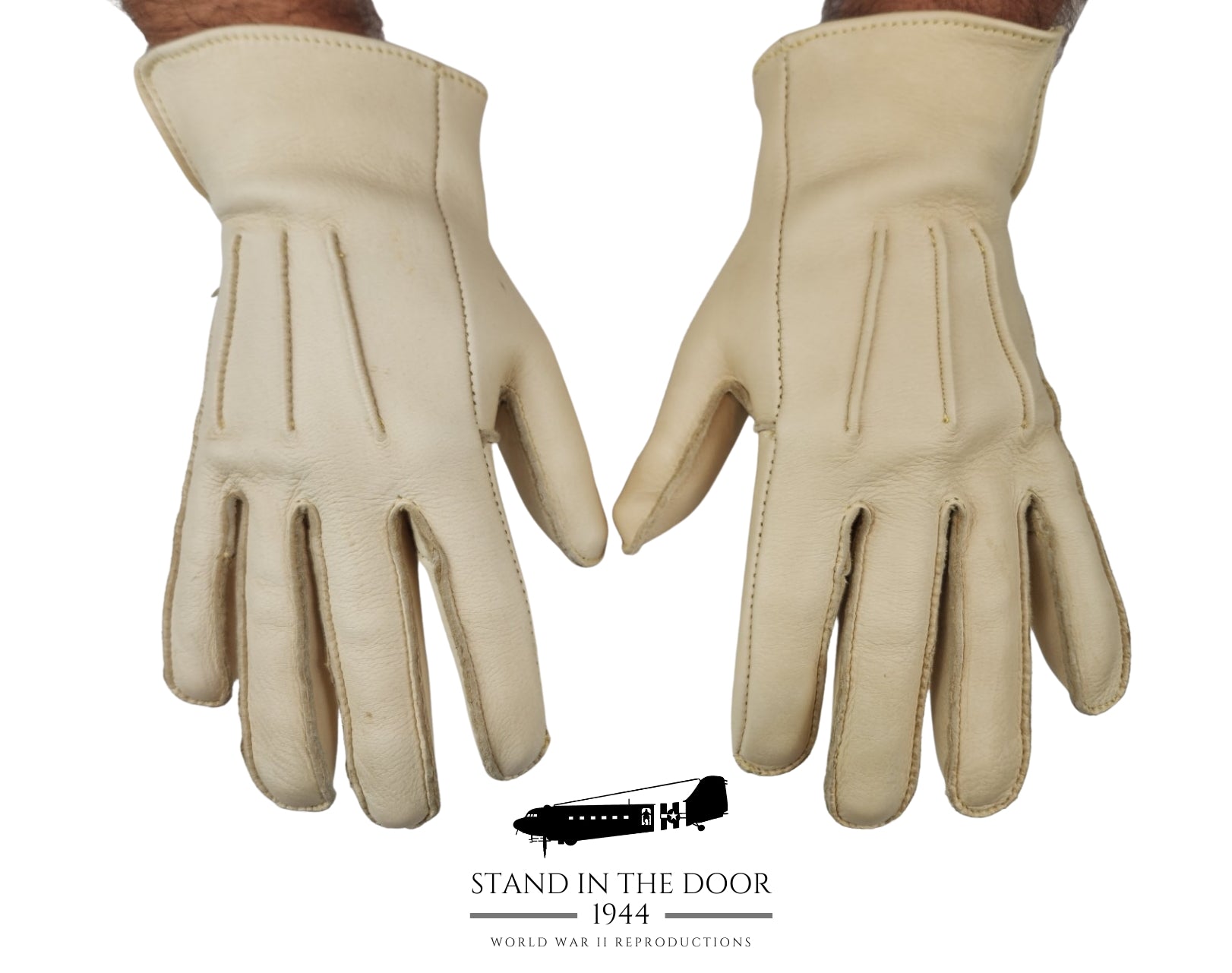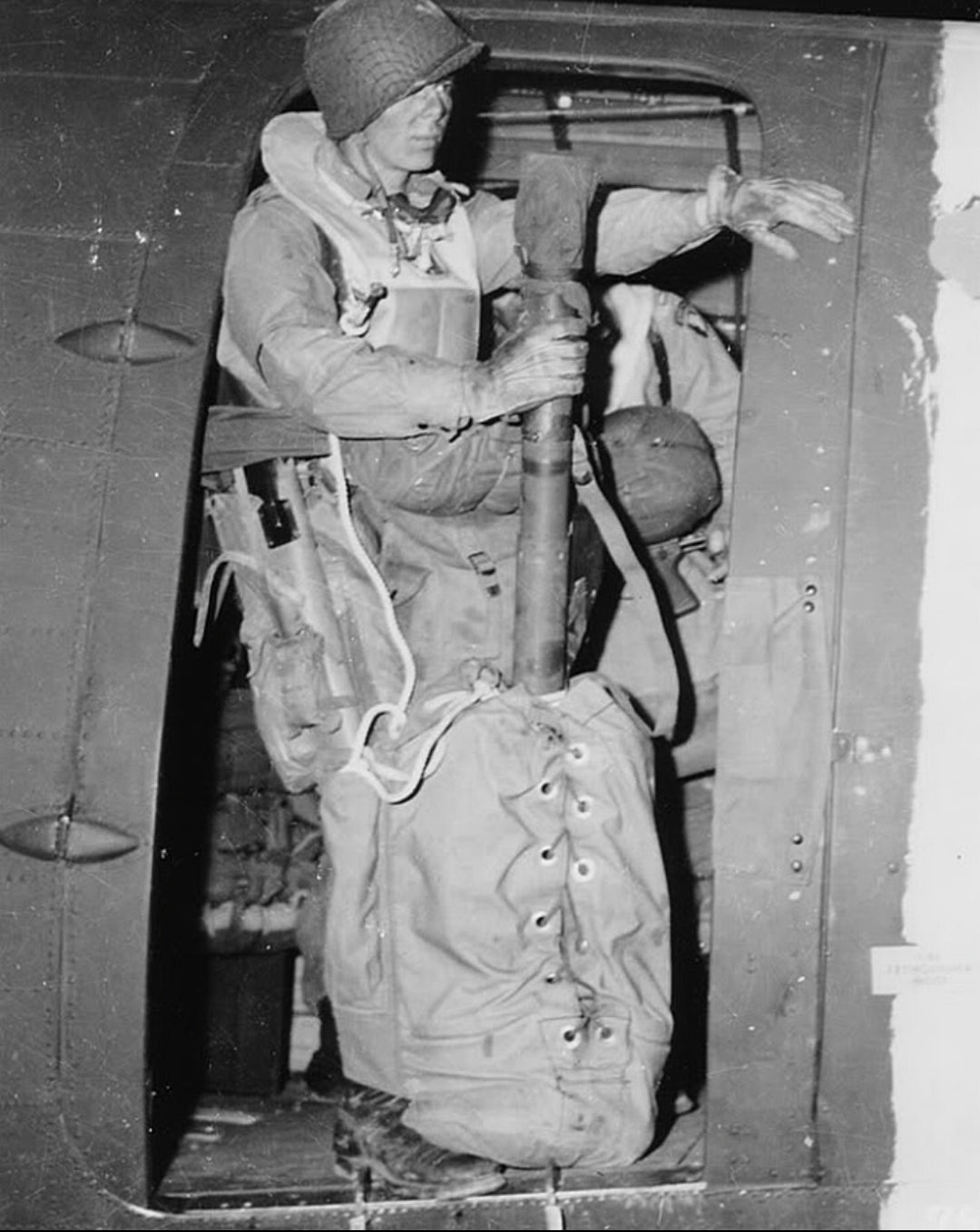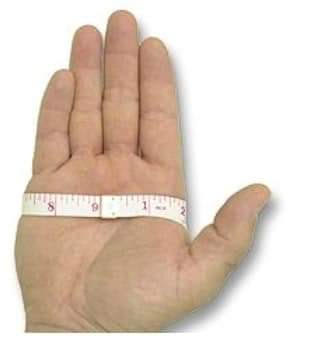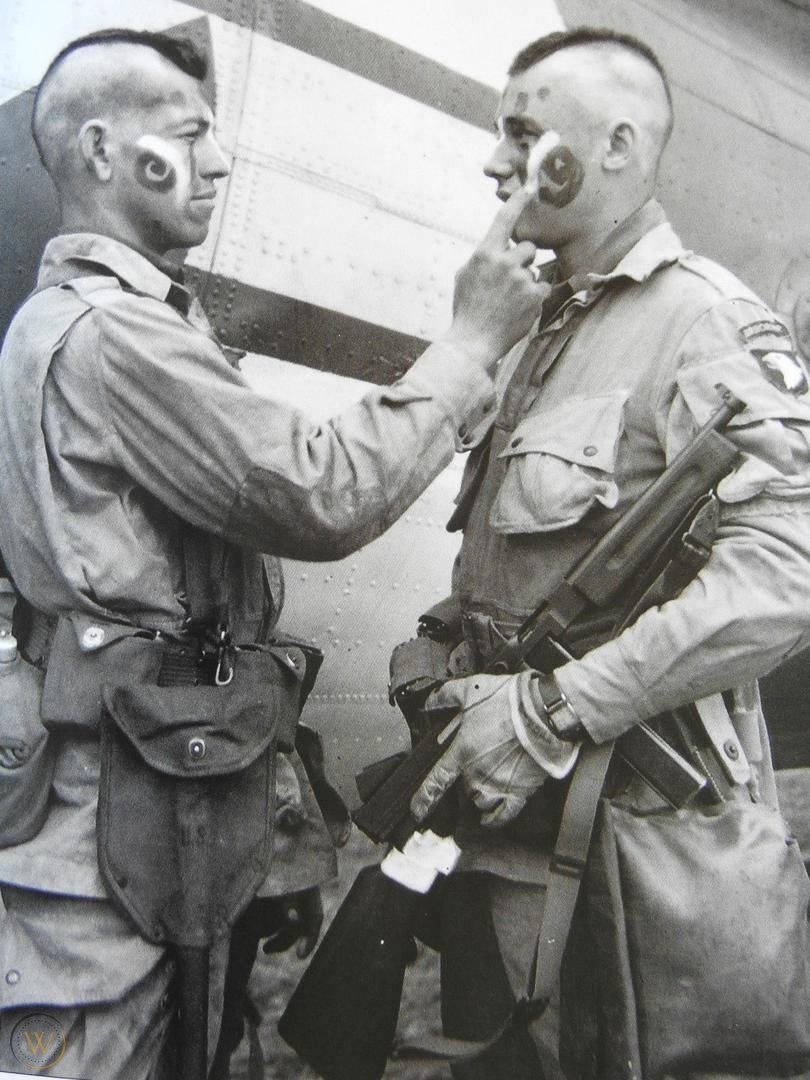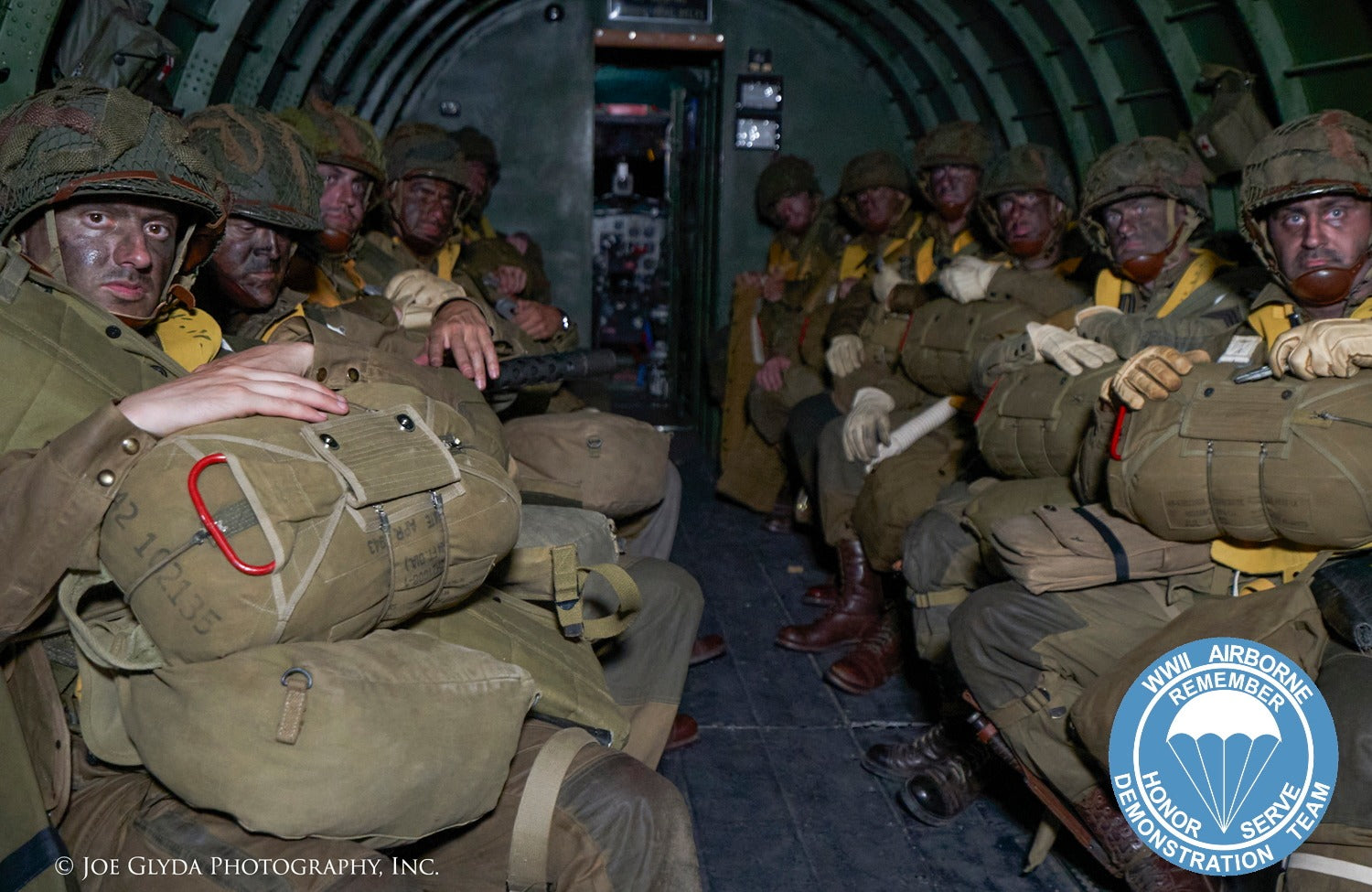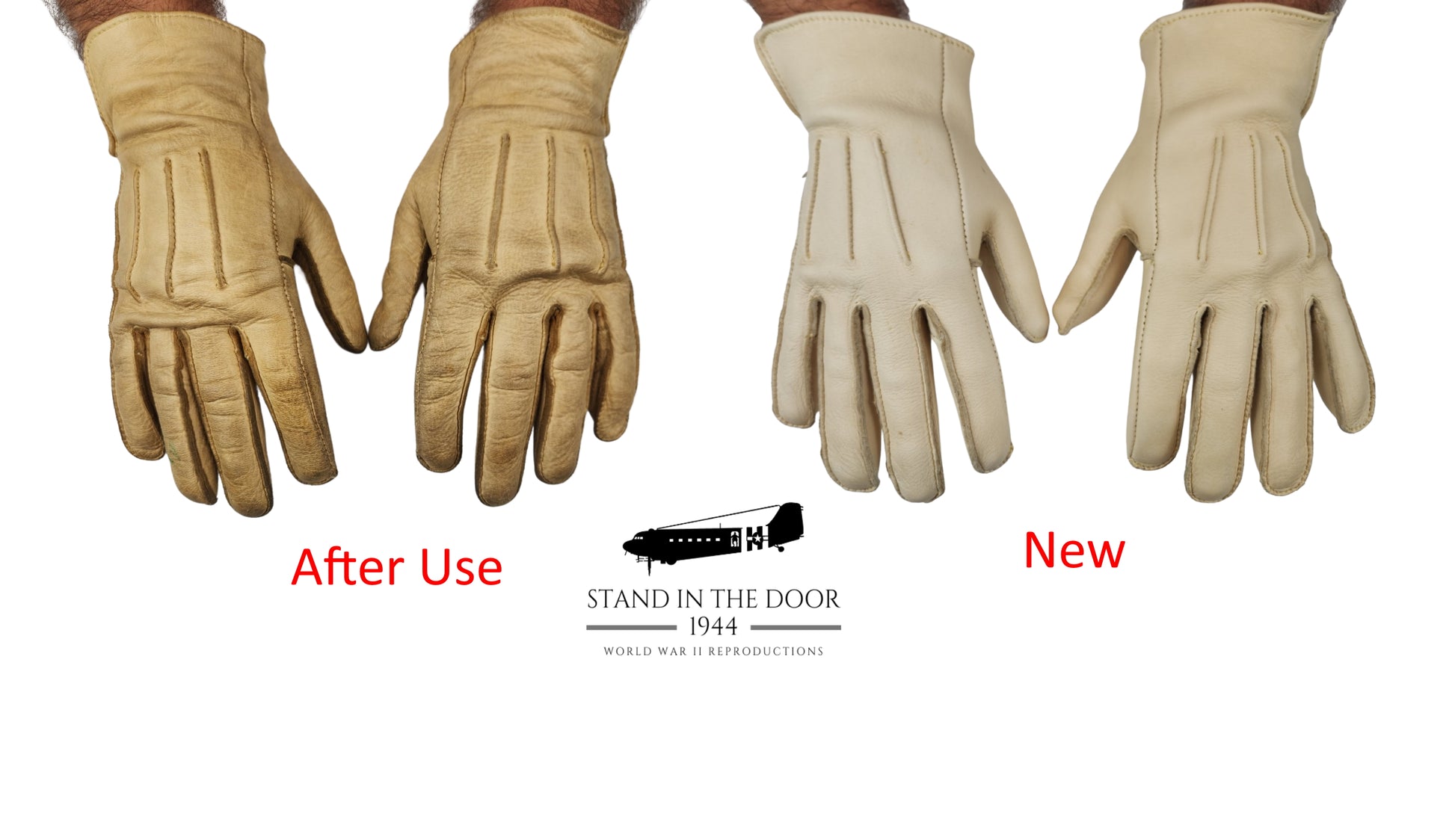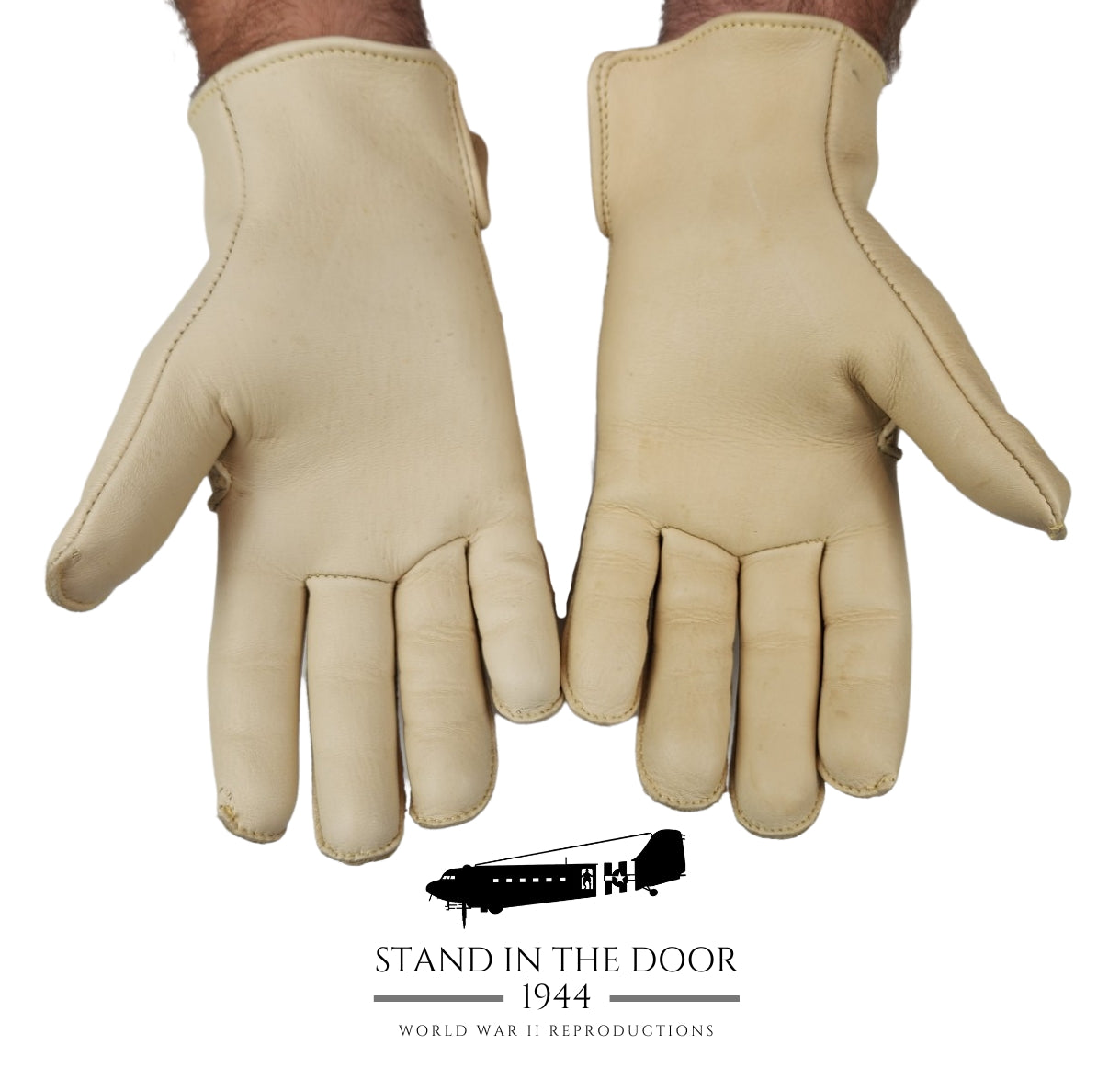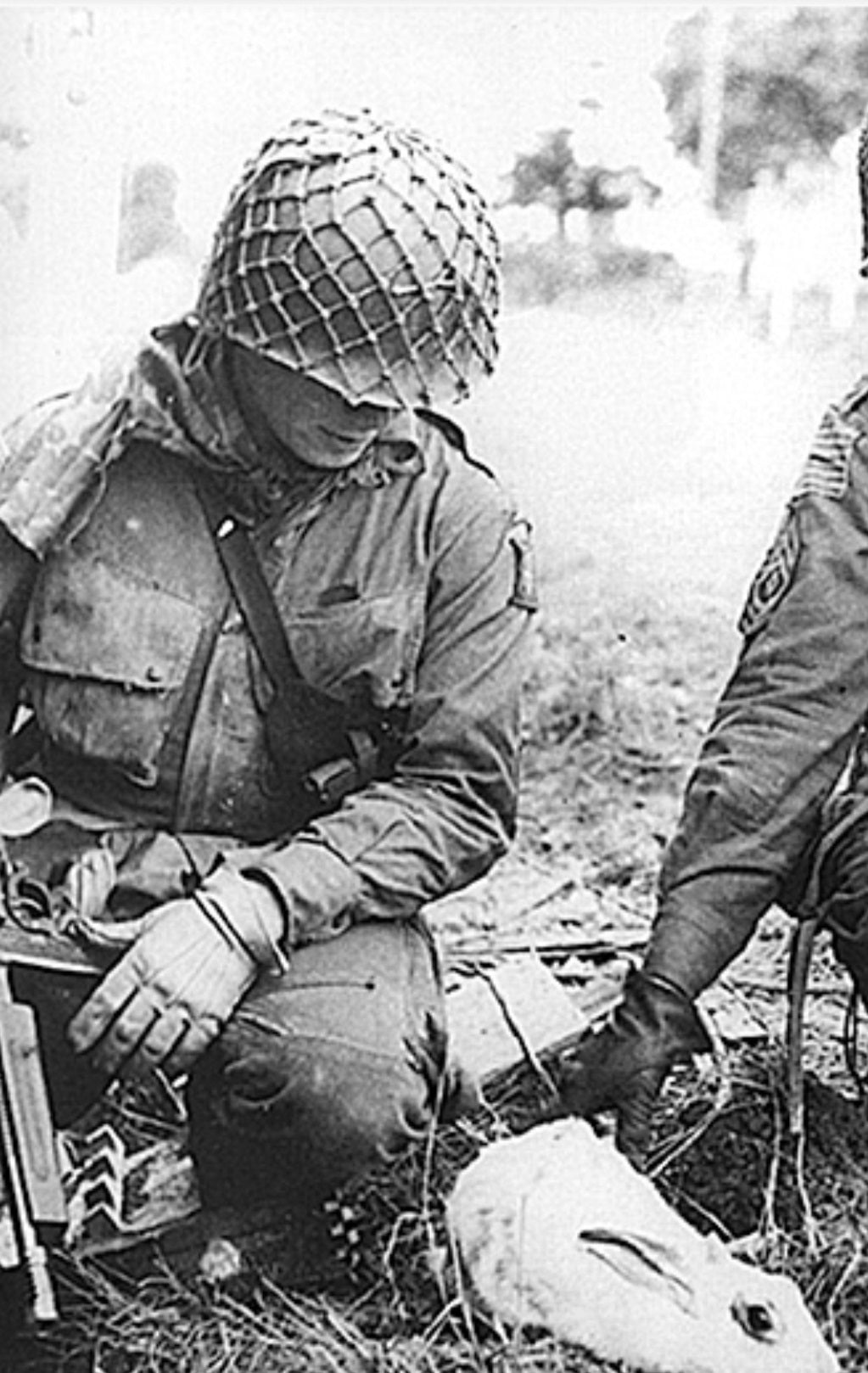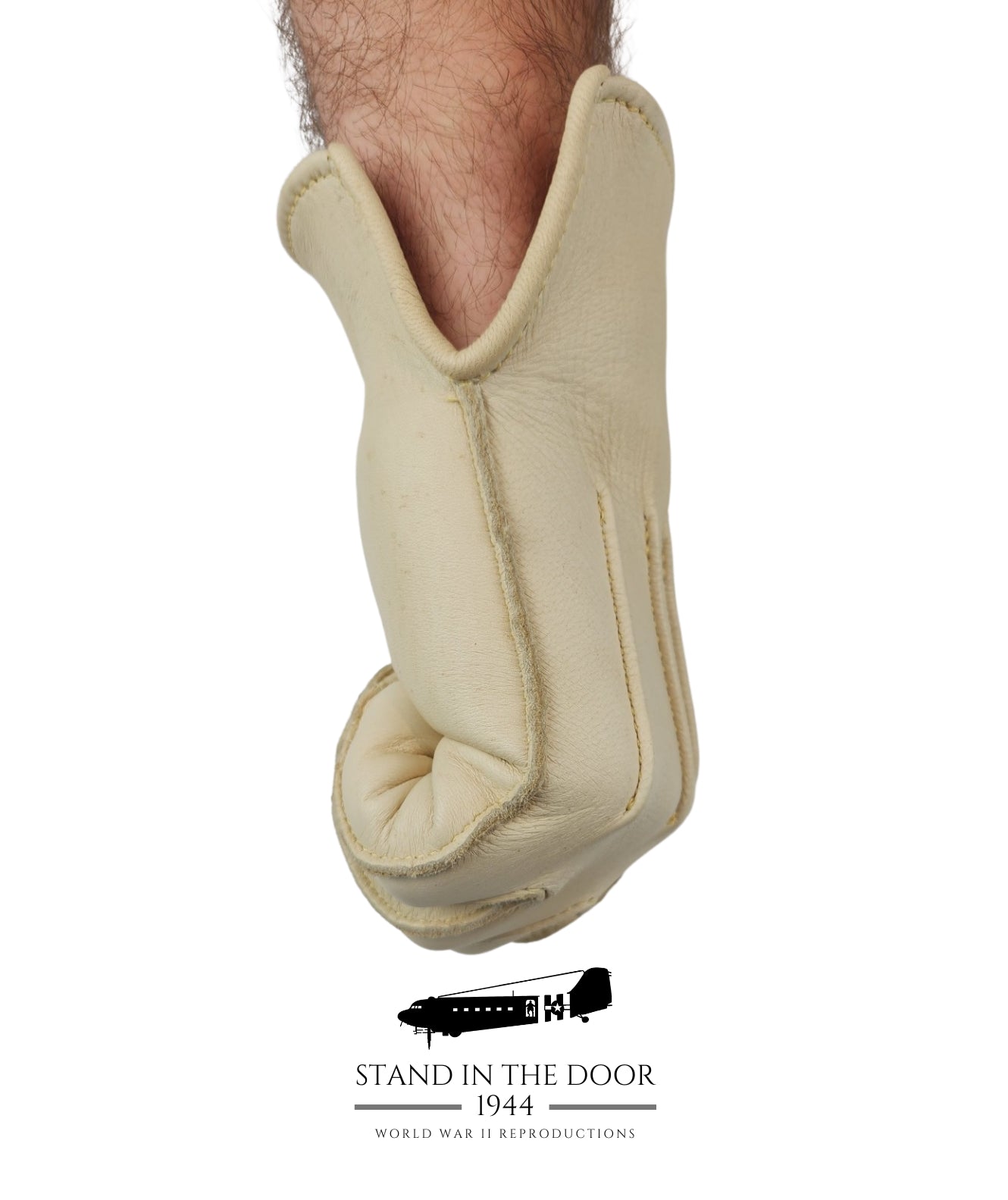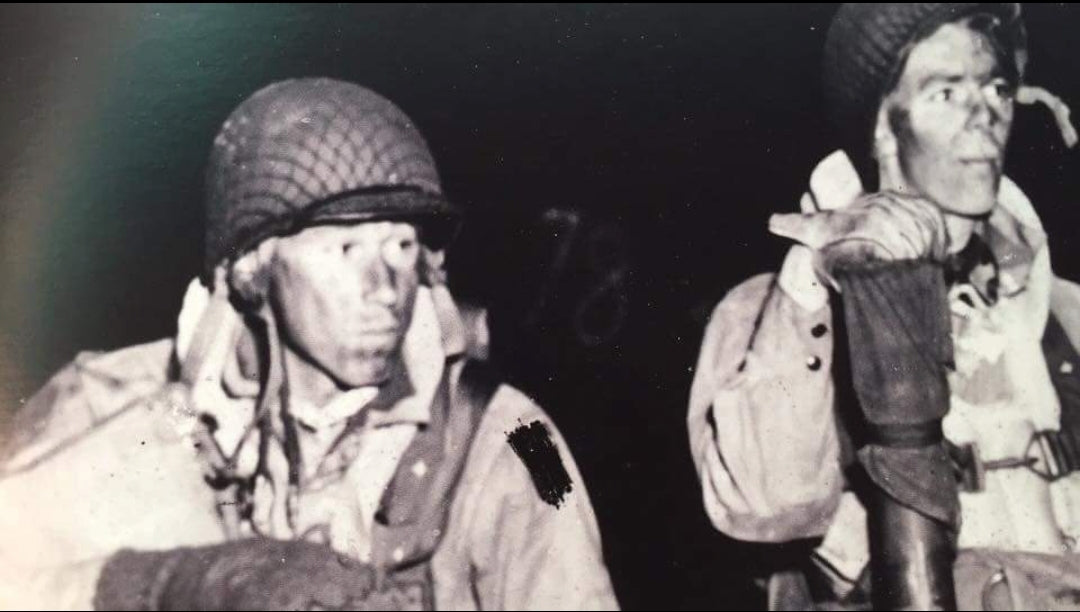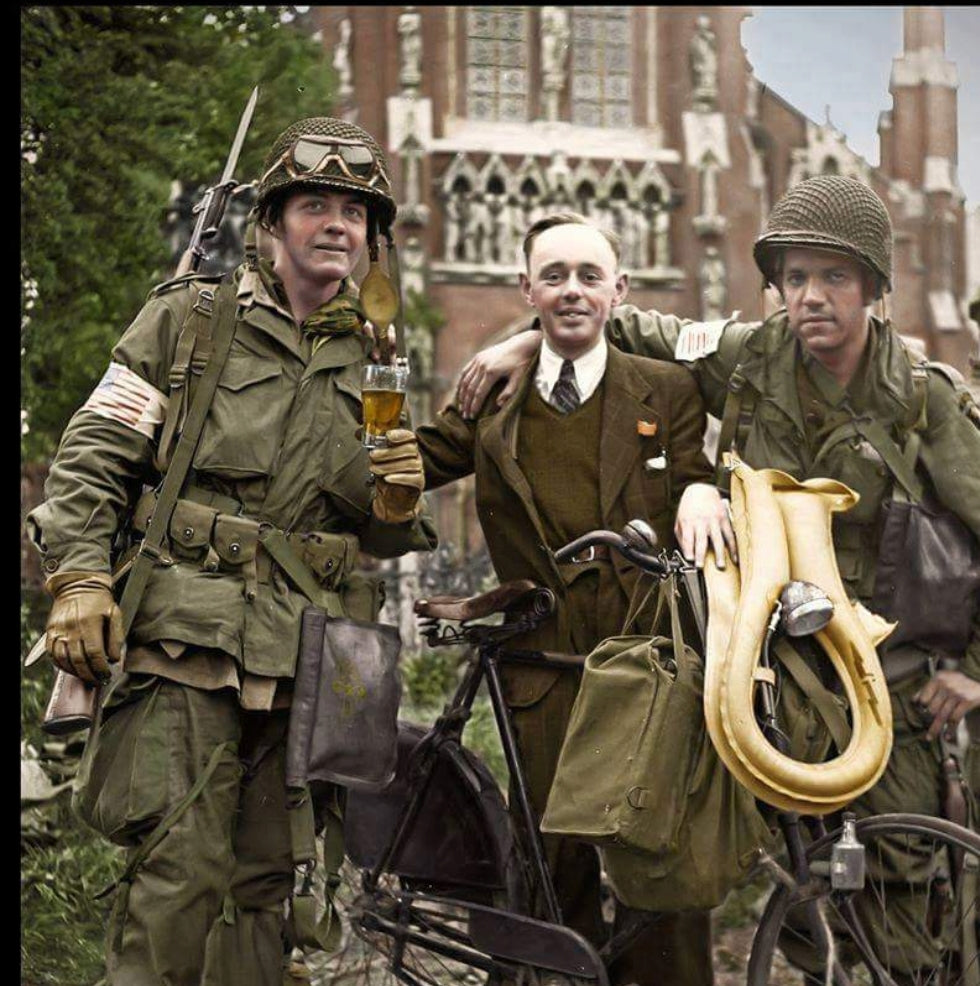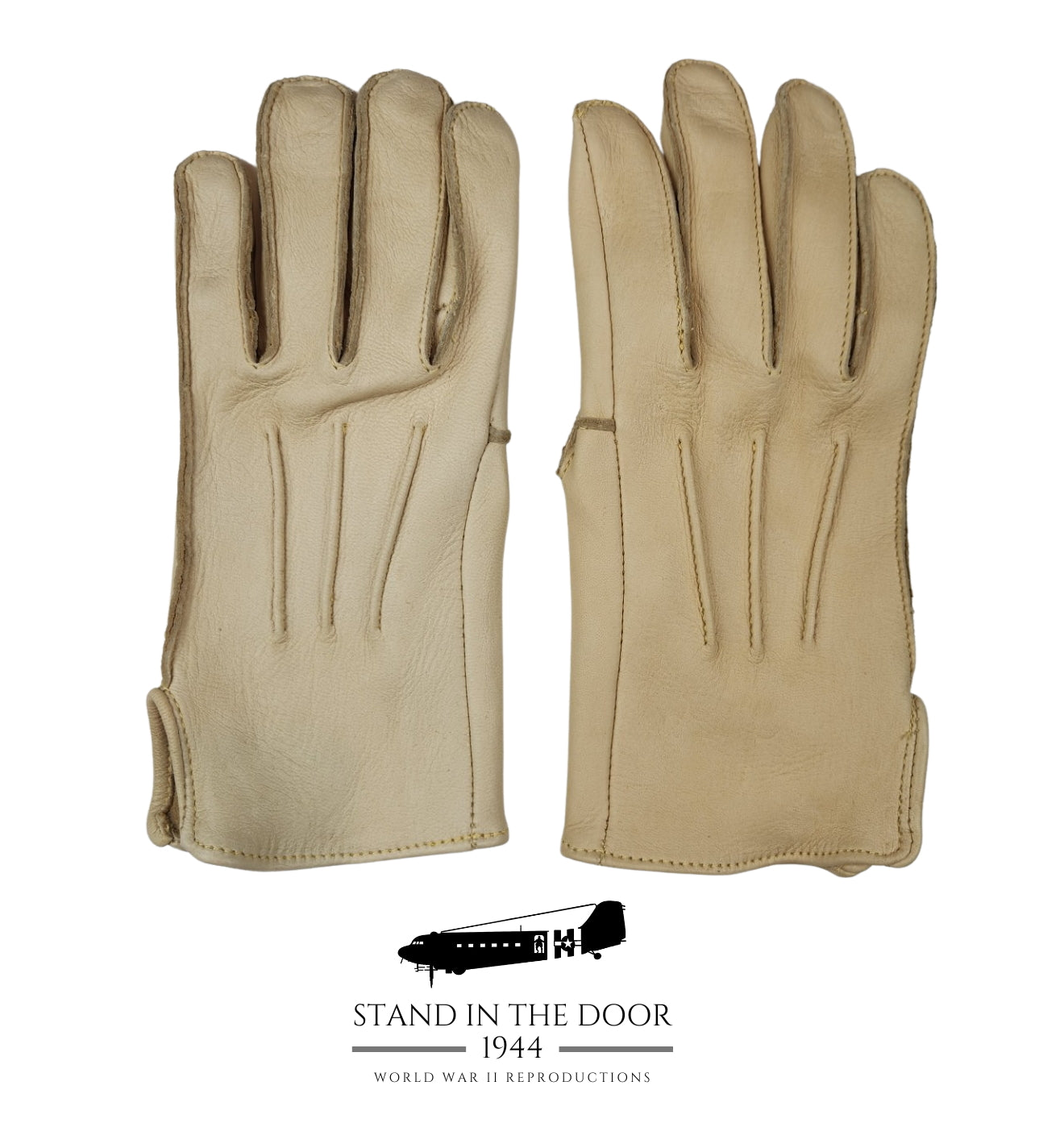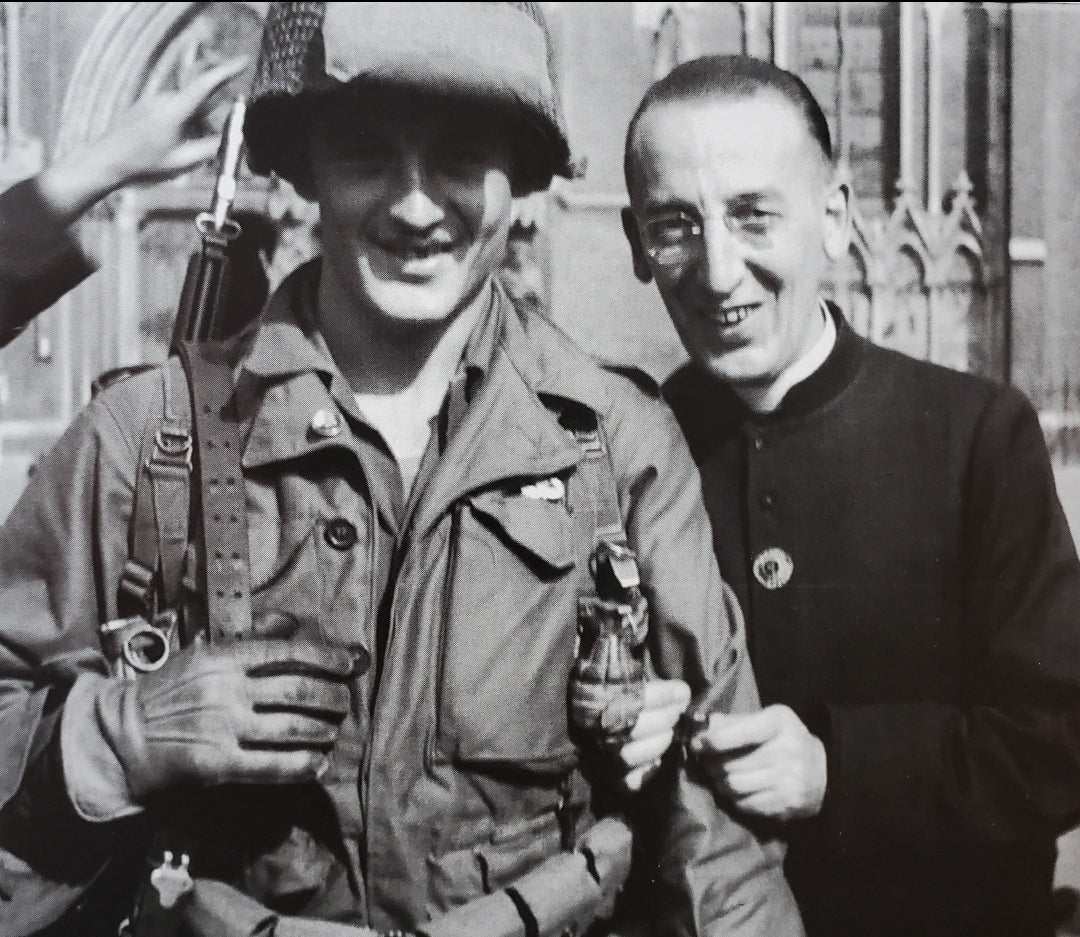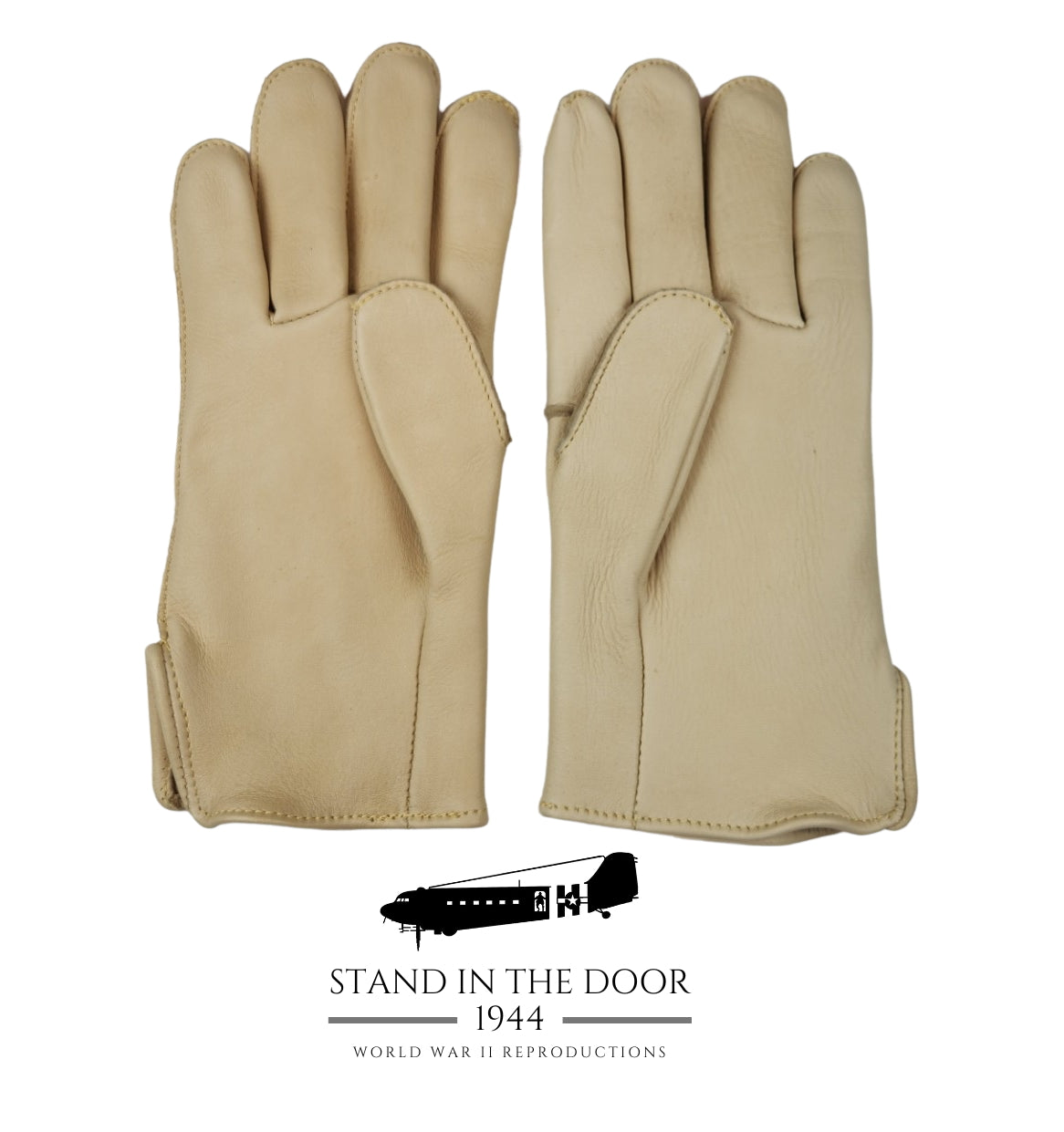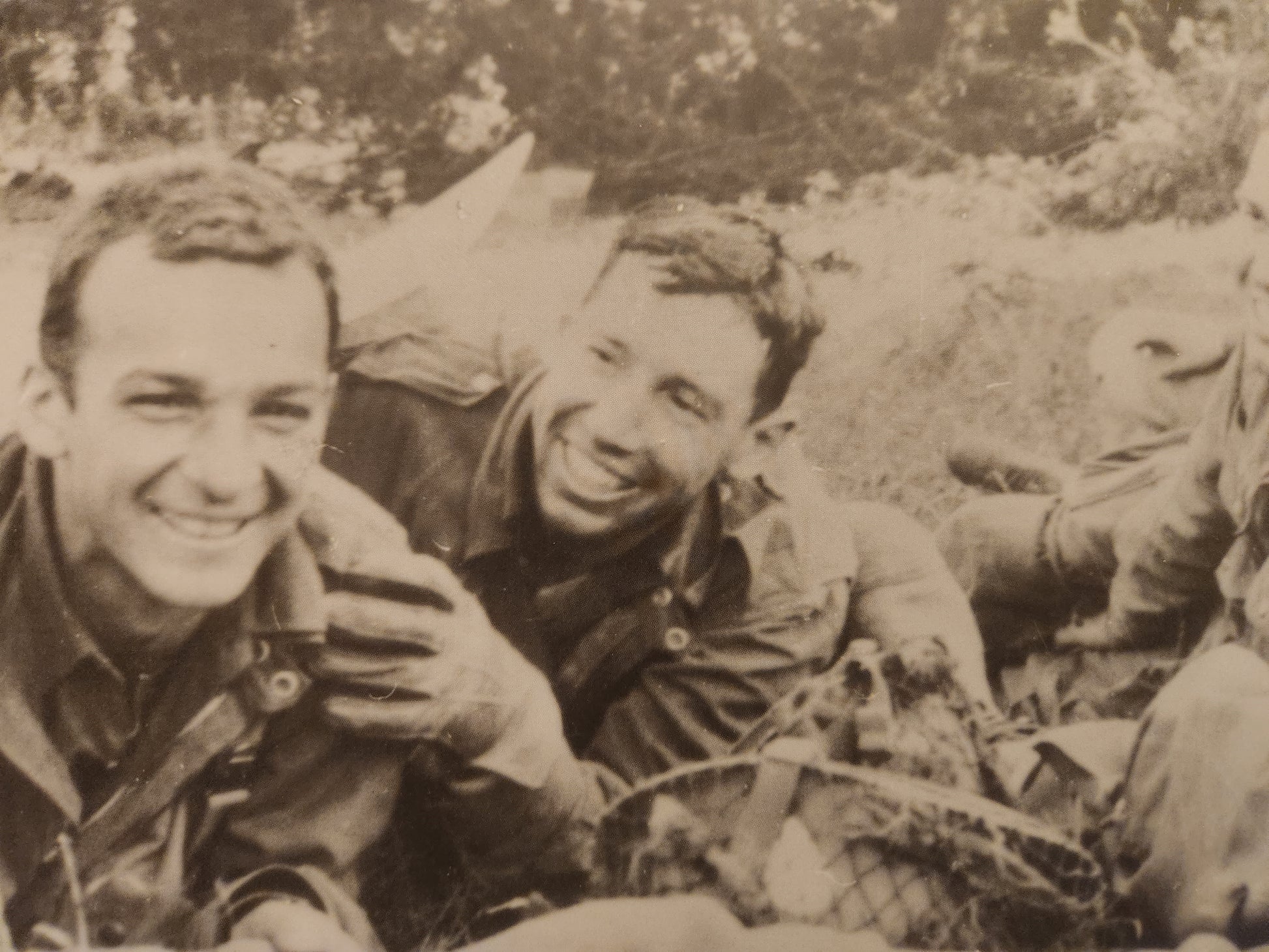Stand In The Door 1944
Proper "D-Day" M42 Paratrooper Gloves
Proper "D-Day" M42 Paratrooper Gloves
Couldn't load pickup availability
This listing is for a "made to order" item. Given the high manufacturing cost of these gloves we can't stock them on the shelves, instead we have to make them to order. Once you order your gloves we send that order onto the "mom and pop" manufacturer who sew our gloves. We have a "revolving door" schedule with the manufacturer meaning that once they finish a batch of gloves for us we immediately are put in line for another batch of gloves. Keeping this manufacturing schedule in mind it can take anywhere from a week to a few months to receive your gloves. If you are needing your gloves for a specific date I highly suggest ordering your gloves as early as possible because there is no way to "fast track" this process. If you have questions regarding timeline on these gloves, don't hesitate to send us an email.
Contrary to common belief fueled by TV shows and movies such as Band of Brothers and Fury, the "pre-war" style M1939 gloves that features the silver buckle on the inside of the wrist were not around at the time of Normandy. After 2 years of hard use the M1939 "buckle gloves" were worn out and not serviceable by the time of Normandy so troopers were issued the M1942 "slit-cuff gloves." As of May 2025, our research of more than 4000 original photos of the 82nd and 101st Airborne in Normandy and Holland we are yet to find a single M1939 "buckle glove."
Stand in the Door 1944 is only 1 of 2 companies in the entire world that make the proper M1942 pattern glove used in D-Day and Market Garden.
Our Gloves Feature:
- Proper "slit cuff design" of the M1942 glove.
- Proper light tan color that darkens just like originals.
- Extra soft doe hide construction (best for maximum dexterity).
- Integrated thumb design to make the glove as strong as possible.
- Proper color
Sizing:
- Wrap a tape measure (or string) around the palm of your hand (see instruction picture for reference).
- Round the measurement up to the nearest half inch.
- If the tape measure reads 9" you are a size 9. If it reads 9.5" you are a 9.5.
- If the tape measure reads 9.25" we suggest rounding up to a size 9.5
- These gloves are a snug fit, as gloves should be, but they do stretch slightly as you wear then and your sweat molds the glove to your hand
- If you are unsure as to how to measure your hand please email us as SID44 will take no responsibility for the gloves that are the wrong size. Our gloves are made using pre made cutting dies so it is impossible for them to be made too small.
We started making these gloves specifically for members of the WWII Airborne Demonstration Team in 2018 who wanted gloves that would hold up to extreme use but also offer the ultimate dexterity that is needed when performing finite tasks during jump operations (handling of the static line hook, parachute manipulation, emergency procedures, etc). This being the case we wanted to reproduce a high quality, long lasting glove that faithfully represented the most common gloves worn by paratroopers in World War II.
99% of repo paratrooper gloves being made today are garbage and only last for a handful of jumps/events. Not only are the the incorrect pattern for Normandy and Holland but they are also made of paper thin leather that wears out quickly as well as most have some kind of slick coating on the gloves that make them difficult to carry a weapon.
After reviewing over 4,000 photographs of the 82nd and 101st Airborne in Normandy in Holland, we could not find a single pair of M1939 "buckle gloves." Beings that gloves are a heavily used item it only makes sense that in the two years of training troopers underwent prior to Normandy the "pre-war" style gloves were worn out and the newer M1942 gloves were issued sometime prior to Normandy. The only style of "issued" gloves being worn by paratroopers in Normandy and Holland were the "war-time" M1942 gloves the feature no wrist buckle and instead have a slit that go up the outside of the wrist.
We made 2 minor changes to the original glove pattern. First we made the fingers a "wrap-around" design rather than a multi-piece gusset design. Basically what that means is there are no seams on the palms of the hand. This makes the gloves stronger because there are no exposed stitch lines on the palm that wear out very quickly with use. This feature is not noticeable from the outside of the glove as it is worn. The second design change we made was we made the thumb an integrated part of the glove rather than a separate piece that is then sewn into the palm. This again eliminates an exposed stitch line on the palm and thus makes the gloves a tough as can be.
Color on these gloves can vary slightly from the pictures but all shades fall within the same color range of original gloves.
GLOVE CARE:
THESE GLOVES DO NOT NEED TO BE TREATED WITH WAX, GREASE, OR OTHER LEATHER CONDITIONERS. THE NATURALLY OCCURING OILS IN THE DOE HIDE PLUS THE OILS FROM YOUR SKIN WILL KEEP THESE GLOVES SOFT AND SUPPLE. APPLYING LEATHER CONDITIONERS NOT MEANT FOR DOE HIDE MAY GIVE UNSATISFACTORY RESULTS. IF THE GLOVES GET DIRTY SIMPLY WASH THEM OFF WITH WATER AND LET THEM AIR DRY OR WEAR THEM UNTIL THEY ARE DRY AND THEY WILL BE JUST AS SOFT AS BEFORE THEY WERE WET.
